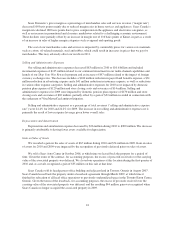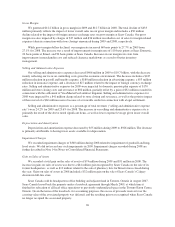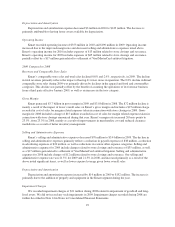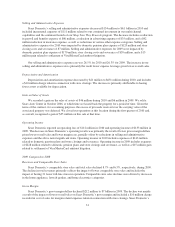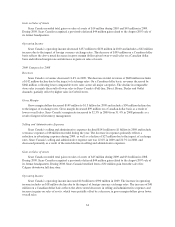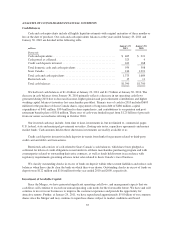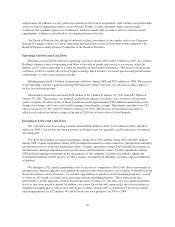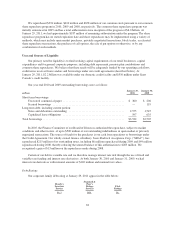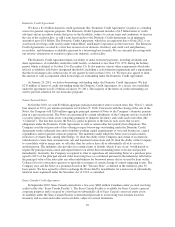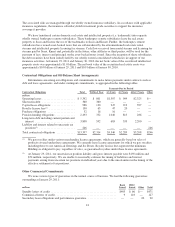Sears 2010 Annual Report Download - page 31
Download and view the complete annual report
Please find page 31 of the 2010 Sears annual report below. You can navigate through the pages in the report by either clicking on the pages listed below, or by using the keyword search tool below to find specific information within the annual report.Selling and Administrative Expenses
Sears Domestic’s selling and administrative expenses decreased $134 million to $6.1 billion in 2010 and
included incremental expenses of $111 million related to our continued investment in our multi-channel
capabilities and the continued launch of our Shop Your Way Rewards program. The decrease includes a reduction
in payroll and benefits expense of $86 million, a reduction in advertising expenses of $35 million, and a $42
million reduction in insurance expense, as well as reductions in various other expense categories. Selling and
administrative expenses for 2010 were impacted by domestic pension plan expense of $120 million and store
closing costs and severance of $7 million. Selling and administrative expenses for 2009 were impacted by
domestic pension plan expense of $170 million, store closing costs and severance of $39 million, and a $15
million gain related to settlement of Visa/MasterCard antitrust litigation.
Our selling and administrative expense rate was 26.5% for 2010 and 26.3% for 2009. The increase in our
selling and administrative expense rate is primarily the result lower expense leverage given lower overall sales.
Depreciation and Amortization
Depreciation and amortization expense decreased by $21 million to $651 million during 2010, and includes
a $10 million charge taken in connection with store closings. The decrease is primarily attributable to having
fewer assets available for depreciation.
Gain on Sales of Assets
We recorded a gain on the sales of assets of $46 million during 2010 and $6 million in 2009. We sold a
Sears Auto Center in October 2006, at which time we leased back the property for a period of time. Given the
terms of the contract, for accounting purposes, the excess of proceeds received over the carrying value of the
associated property was deferred. We closed our operations at this location during the first quarter of 2010 and,
as a result, recognized a gain of $35 million on this sale at that time.
Operating Income
Sears Domestic reported an operating loss of $112 million in 2010 and operating income of $133 million in
2009. The decrease in Sears Domestic’s operating results was primarily the result of lower gross margin dollars
given lower overall sales and lower margin rate, partially offset by reductions in selling and administrative
expenses and the above noted significant items. Operating income in 2010 includes expenses of $143 million
related to domestic pension plans and store closings and severance. Operating income in 2009 includes expenses
of $228 million related to domestic pension plans and store closings and severance, as well as a $15 million gain
related to settlement of Visa/MasterCard antitrust litigation.
2009 Compared to 2008
Revenues and Comparable Store Sales
Sears Domestic’s comparable store sales and total sales declined 8.7% and 6.5%, respectively, during 2009.
The decline in total revenues primarily reflects the impact of lower comparable store sales and includes the
impact of having 21 fewer full-line stores in operation. Comparable store sales declines were driven by decreases
in the home appliance, lawn & garden, and home electronics categories.
Gross Margin
Sears Domestic’s gross margin dollars declined $212 million to $7 billion in 2009. The decline was mainly
a result of the impact of lower overall sales on Sears Domestic’s gross margin and included a $10 million charge
recorded in cost of sales for margin related expenses taken in connection with store closings. Sears Domestic’s
31





